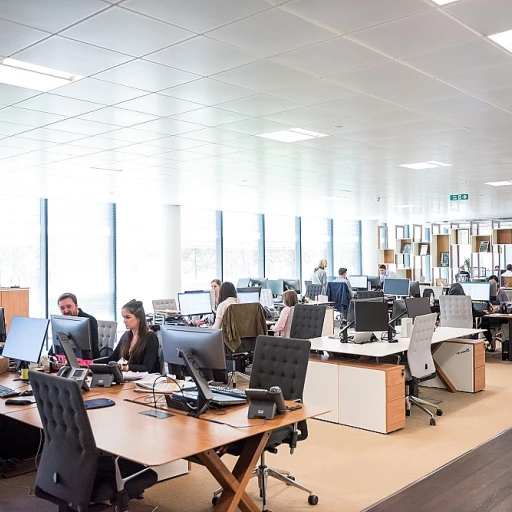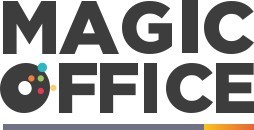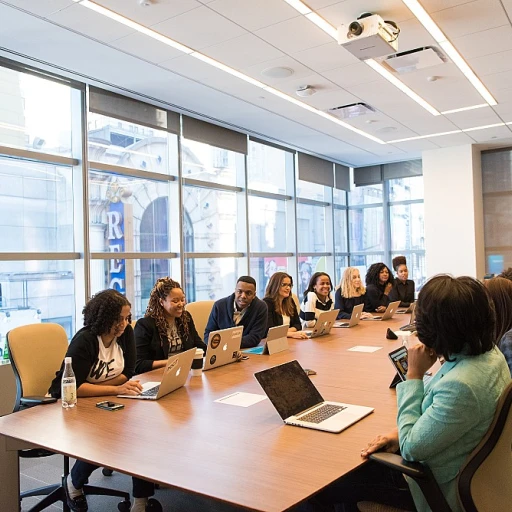
Understanding the Indian Office Culture
The Essence of Indian Office Interactions
The Indian office environment is unique and deeply enriched with a blend of traditional and modern values. These nuances form the fabric of communication within workplaces, shaping how employees connect and engage. Understanding these dynamics can significantly improve social interaction, fostering cohesive teams and enhancing productivity. In Indian offices, communication goes beyond just verbal exchanges. It's a complex tapestry interwoven with social styles that range from the amiable style, which is empathetic and patient, to the driving style, characterized by assertiveness and focus on results. Recognizing and adapting to these communication styles allows employees to navigate the workplace with better social skills. The diversity in communication styles is often a reflection of the nation's multicultural ethos, presenting both strengths and weaknesses. While diversity brings varied perspectives, it can also lead to misunderstandings if communication styles differ vastly. Employees need to learn social cues and engage effectively, making a concerted effort to enhance workplace interactions. Understanding the Objectives of Communication in Indian Companies is vital to grasp the underlying expectations in Indian offices. The objective often includes fostering a sociable environment that not only values traditional rapport but also embraces new age digital media. Therefore, successful communication in Indian offices is a balancing act of honoring both conventional practices and progressive digital strategies. As we delve deeper into various sections, we'll explore how technology plays a pivotal role in bridging communication gaps and the evolving trends that shape social interactions in workspaces.Challenges in Sociable Communications
Fostering Sociable Communications in Indian Offices
Navigating communication challenges in Indian workspaces can be intricate due to the diverse social styles and cultural nuances present. Employees often come from varied backgrounds, and the way they engage in communication can differ significantly. This diversity, while beneficial, also presents distinct challenges. Understanding the range of communication styles employees may adopt is a key step. The expressive style, for instance, appeals to those who use dynamic modes of engagement, whereas the analytical style resonates with individuals who prefer detailed, factual communications. Within this framework, the amiable style helps establish harmonious interactions, while the driving style focuses on decision-making efficiency. Social media and technology play a pivotal role in bridging these gaps. Private platforms foster internal communications, yet using such platforms needs to be aligned with defined media management strategies and privacy policies to ensure content security. Establishing a balance between open communications and structured styles can improve social interactions and work dynamics. For example, sociable marketing efforts can benefit from an understanding of employees' strengths and weaknesses in communication. Facilitating engagements through user agreement with digital tools encourages a unified, inclusive office culture. Further insights on navigating communication and corporate culture to empower employees are detailed in this transformative guide. By mastering diverse communication styles, office management can fill current gaps and foster a conducive work environment for all employees.Strategies for Effective Communication
Practical Approaches to Enhance Communication Skills
In an Indian office setting, understanding the diverse communication styles is key. Researchers emphasize that employees naturally gravitate towards certain social styles such as amiable, analytical, expressive, and driving. Recognizing these can help in tailoring workplace communication strategies. Leverage Social Styles for Engagement- Adopt a customizable communication approach to accommodate different social styles. Use amiable style for a more nurturing interaction with employees who value relationships and harmony.
- Recognize the needs of people with an analytical style by providing data-driven insights to support decision making.
- Conduct workshops to help employees learn and apply various communication styles.
- Encourage open discussions about individual communication strengths and weaknesses, allowing for better interpersonal engagement.
- Promote the use of social media and internal platforms for more interactive communications. These platforms can also support the company's public relations efforts.
- Implement and communicate a comprehensive privacy policy and user agreement to protect employee data when utilizing these mediums.
- Invest in media management tools to streamline internal communications. For example, integrating conference room monitoring systems can enhance efficiency during meetings by reducing logistical interruptions.
Role of Technology in Bridging Communication Gaps
Integrating Technology for Better Workplace Interactions
In the dynamic landscape of Indian workspaces, technology plays a pivotal role in bridging communication gaps. With the diverse social styles present among employees, leveraging digital tools can enhance engagement and improve social interactions. The integration of technology not only supports the unique communication styles of each employee but also fosters a more inclusive environment.
One of the primary ways technology aids in communication is through social media platforms. These platforms offer a space for employees to express their ideas and connect with their peers, which can be particularly beneficial in overcoming the challenges of sociable communications. For example, using a private platform dedicated to internal communications can help maintain a balance between public relations and privacy policy adherence.
Adapting to Diverse Communication Styles
Understanding and adapting to different communication styles is crucial for effective interactions. Technology can facilitate this by providing tools that cater to various social styles, such as the amiable style, expressive style, and analytical style. These tools can help employees learn social cues and improve their communication skills, which is essential for successful workplace engagement.
Moreover, media management tools can help in crafting content that resonates with the diverse workforce. By understanding the strengths and weaknesses of different communication styles, management can tailor their messages to fill communication gaps and enhance employee engagement. This approach not only supports sociable marketing efforts but also strengthens the overall communication strategy.
Enhancing Communication Through Collaborative Tools
Collaborative tools are another technological advancement that can significantly improve workplace communications. Platforms that support real-time collaboration and feedback can help employees work together more effectively, regardless of their physical location. This is particularly important in a country as vast and diverse as India, where remote work is becoming increasingly common.
By integrating these technologies, companies can create a more cohesive and productive work environment. As employees learn to navigate these tools, they can better understand their colleagues' communication preferences, leading to more harmonious interactions and improved workplace dynamics.
Case Studies of Successful Communication Practices
Successful Communication Practices in Indian Workspaces
Exploring effective communication practices in Indian workspaces provides valuable insights into how companies can enhance their internal interactions. By understanding the unique social styles and communication preferences of employees, organizations can tailor their strategies to foster a more sociable and engaging environment.
Example 1: Leveraging Social Media for Employee Engagement
One prominent example of successful communication in Indian companies is the strategic use of social media platforms. By creating dedicated channels for employees to share content and ideas, companies have improved social interactions and engagement. This approach not only fills the gap in traditional communication styles but also allows for a more expressive style of interaction, accommodating various social styles among employees.
Example 2: Implementing a Style Model for Internal Communications
Another successful practice involves adopting a communication style model that recognizes the diverse social styles within the workforce. By categorizing employees into amiable, analytical, driving, and expressive styles, management can tailor their communication approach to suit individual preferences. This method has proven effective in enhancing employee satisfaction and improving overall communication efficiency.
Example 3: Privacy Policy and Media Management
Some Indian companies have also focused on strengthening their privacy policy and media management practices. By ensuring clear guidelines and a user agreement that respects employee privacy, organizations have built trust and encouraged open communication. This approach not only addresses privacy concerns but also promotes a culture of transparency and mutual respect.
These case studies demonstrate the importance of adapting communication strategies to the unique needs of Indian workspaces. By learning from these examples, companies can improve social interactions and foster a more cohesive work environment.
Future Trends in Workplace Communication
Embracing the Future of Workplace Communication
As Indian workspaces evolve, the future of workplace communication is poised for significant transformation. The integration of technology continues to play a pivotal role in bridging communication gaps, as previously discussed. However, the future holds even more dynamic changes that will enhance interactions among employees.
Adapting to Diverse Communication Styles
Understanding and adapting to diverse communication styles will be crucial. Employees will need to learn social skills that accommodate various social styles, such as the amiable style, expressive style, and analytical style. Recognizing these styles can improve social engagement and foster a more inclusive work environment.
Leveraging Social Media for Internal Communications
The role of social media in workplace communication is expected to expand. Companies might use private platforms to enhance sociable communications, allowing employees to share content and engage in sociable marketing initiatives. This shift will require effective media management to balance public relations and privacy policy considerations.
Enhancing Employee Engagement Through Technology
Future trends indicate a growing reliance on technology to fill communication gaps. For example, the use of AI-driven communication tools can streamline interactions and provide personalized communication experiences. These tools will help management understand the strengths and weaknesses of different communication styles and adapt accordingly.
Continuous Learning and Adaptation
Finally, continuous learning will be essential as communication technologies and styles evolve. Employees will need to stay informed about new tools and strategies to maintain effective communications. This commitment to learning will empower people to navigate the complexities of modern workplace interactions successfully.













